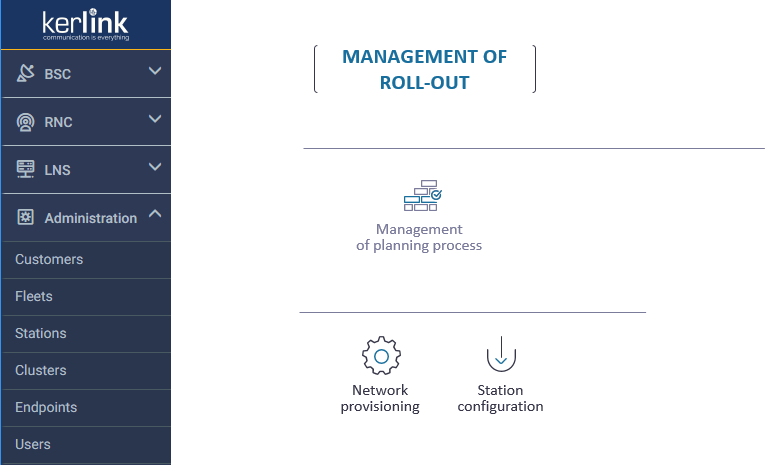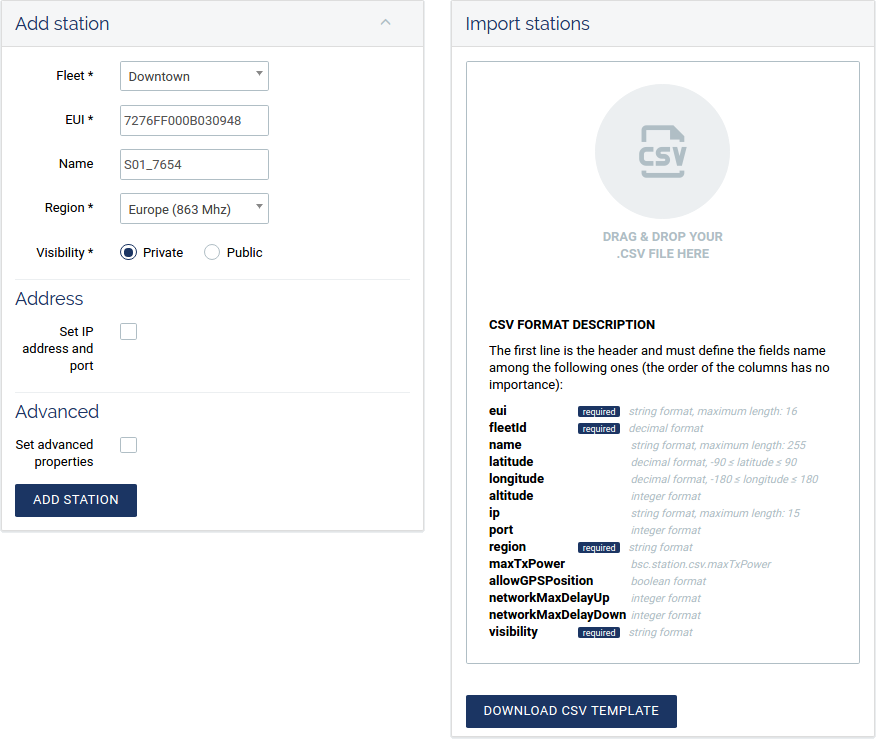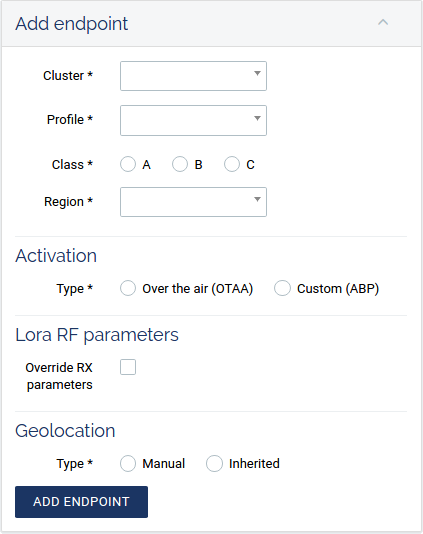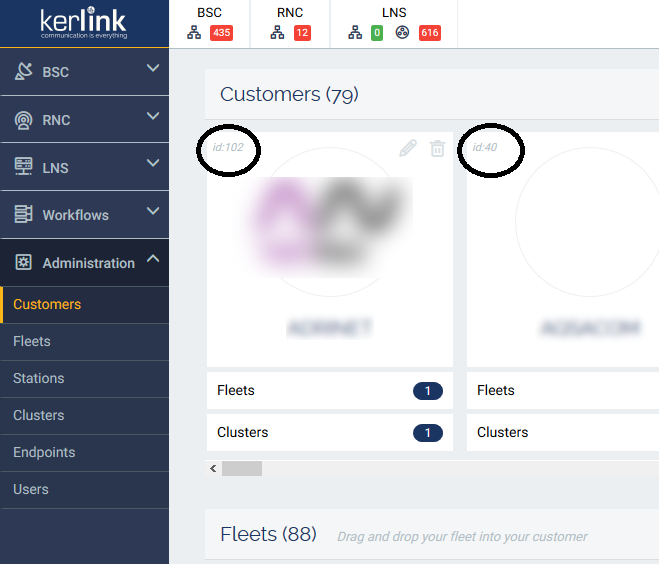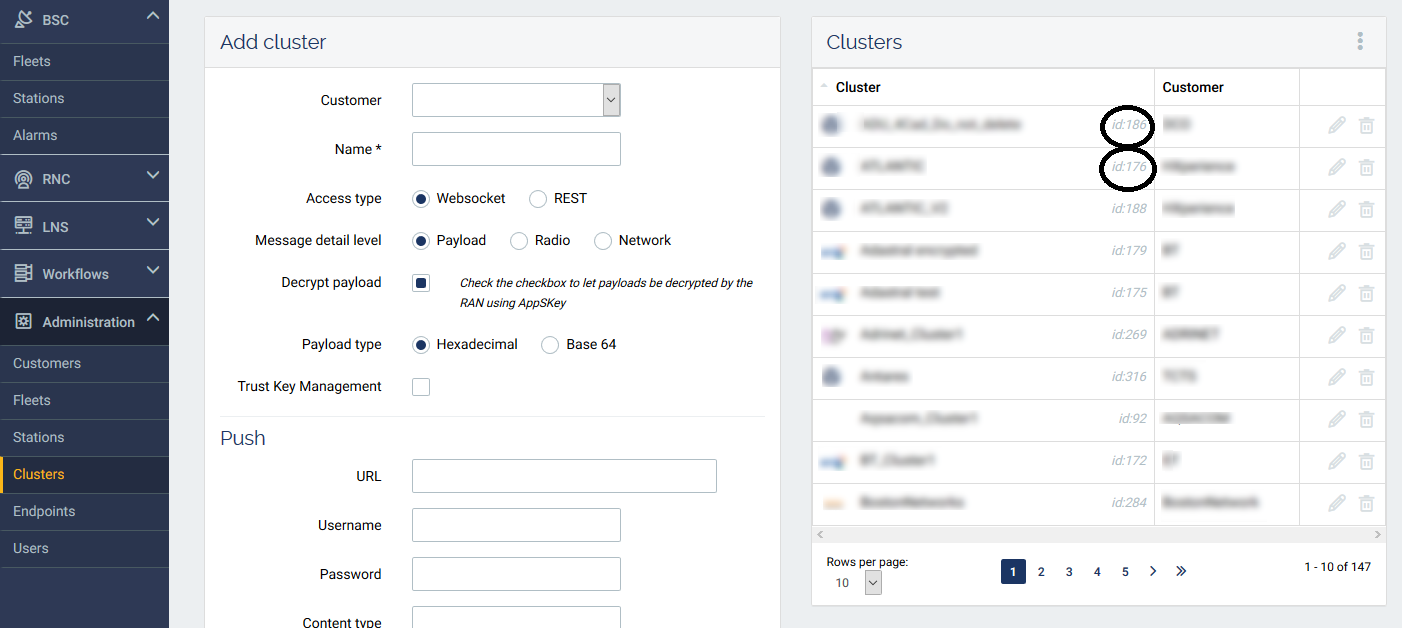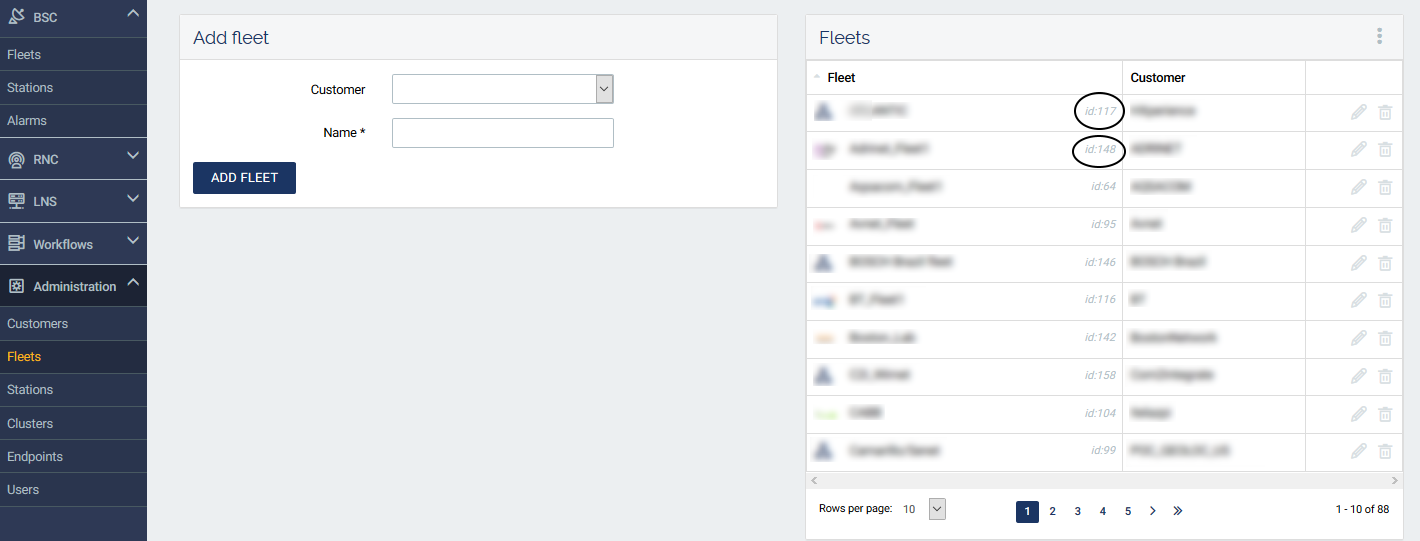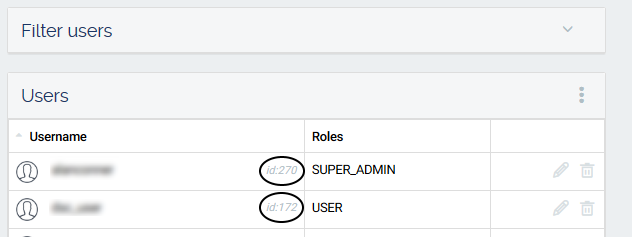Table of Contents
Administration
Users and roles
Super Admin
Super Admin has a global view of the whole platform – whatever the customer.
Admin
Admin is dedicated to a customer – can perform all the operation limited to a specific customer
User
User is dedicated to a customer – can perform all the operations on fleets, gateways, clusters and end-devices limited to a specific customer
Reader
Same as USER but read only.
Configuration
This section allows you to configure via the Dashboard:
- Customers (group of fleets and clusters)
- Fleets (group of gateways)
- Gateways
- Clusters (group of end-devices)
- End-devices
- Users (accounts)
Note: any given end-device can belong to one and only one cluster.
Manage data
The gateways can be added manually, or as a batch using the CSV import feature:
A similar procedure can be performed for managing clusters and end-devices.
For end-devices, here is how the activation parameters can be specified :
User management
Here is a brief overview of the roles and permissions:
- Super admin users can manage customers
- Super admins and admin users can create user accounts.
- All other user roles can manage fleets, stations, clusters and end-devices
IDs
All customers, clusters, fleets and users are identified with an ID. These IDs can be used to send REST API commands.
Customer ID
Super Admin users can check customer IDs in the Customers page of web interface, in the top left of each customer element.
This ID can also be retreived by REST API method getAuthenticatedUser. Unlike the use of web interface, this REST API method can be used by all the users independently of their role.
Cluster ID
Super admin and admin users can check cluster IDs in the Cluster page, in the top right of each customer element.
This ID can also be retreived by REST API method getClusters. Unlike the use of web interface, this REST API method can be used by all the users independently of their role.
Fleet ID
Super admin and admin users can check fleet IDs in the Fleets page, in the top right of each customer element.
This ID can also be retreived by REST API method getFleets. Unlike the use of web interface, this REST API method can be used by all the users independently of their role.
User ID
Super admin and admin users can check user IDs in the Users page, in the top right of each customer element.
This ID can also be retreived by REST API method getAuthenticatedUser. Unlike the use of web interface, this REST API method can be used by all the users independently of their role.
